crwdns2915892:0crwdne2915892:0
Follow this guide to replace the glued-in battery in your MacBook Pro using an iFixit kit with adhesive remover. The adhesive remover helps weaken the glue securing the old battery, making it easier to remove.
iFixit adhesive remover is flammable. Follow this procedure in a well-ventilated area. Do not smoke or work near an open flame.
To minimize risk of damage, turn on your MacBook and allow the battery to fully discharge before starting this procedure. If a charged lithium-ion battery is accidentally punctured, a dangerous and uncontrollable fire may result. If your battery looks puffy or swollen, take extra precautions.
Note: The solvent used to dissolve the battery adhesive can damage certain plastics. Follow all instructions and take care where you apply the adhesive remover.
crwdns2942213:0crwdne2942213:0
-
-
Power on your Mac and launch Terminal.
-
Copy and paste the following command (or type it exactly) into Terminal:
-
sudo nvram AutoBoot=%00
-
Press [return]. If prompted, enter your administrator password and press [return] again. Note: Your return key may also be labeled ⏎ or "enter."
-
sudo nvram AutoBoot=%03
-
-
crwdns2935267:0crwdne2935267:0Magnetic Project Mat$19.95
-
Use a P5 Pentalobe driver to remove the six screws securing the lower case:
-
Two 6.2 mm screws
-
Four 3.4 mm screws
Sur le mien A1708 EMC3164 j’ai 4 vis de 6,2 (les coins) et 2 vis de 3,4 celles au milieu en bas
Ce tutoriel n’est pas dans la bonne section !
c’est le 13” avec touch bar et non celui avec les touches de fonction .
l’autre tuto nommé “écran complet” est le bon
Bonjour Vincent,
Si vous cherchez le même tutoriel pour le MacBook 13” non Touch Bar, le voici : https://fr.ifixit.com/Tutoriel/Remplacem...
Before you start I suggest you get magnifier eyeware as screws and connectors are very small and good lightning are a big PLUS
Completed whole steps in over 4 hours….but worth it. Works back perfect and battery error message is gone….
Nothing beats a properly grounded ESD workstation, and a grounded wrist strap.
-
-
-
Apply a suction handle to the lower case near the front-center area of the MacBook Pro.
-
Lift the suction handle to create a slight gap between the lower case and the chassis.
-
-
-
Insert one corner of an opening pick into the space between the lower case and the chassis.
-
Slide the opening pick around the nearest corner and halfway up the side of the case.
The instruction implies that sliding the pick up to the side of the case releases the clip. This is far from the truth; it takes a pretty strong force to pop the clip open. The plastic pick is a good start, but you need to reach in and pull the middle of that side of the case pretty hard.
-
-
-
Repeat the previous step on the opposite side, sliding your opening pick under the lower case and up the side to pop the second clip free.
-
-
-
Insert your opening pick once again under the front edge of the lower case, near one of the two centermost screw holes.
-
Give the pick a firm twist to pop free the third clip securing the lower case to the chassis.
-
Repeat this procedure near the other of the two centermost screw holes, popping the fourth clip free.
Look at Step 8 pics 2 and 3 to see exactly where the clips are that need to be released. Taking the bottom cover off my MBP took for ever because I didn’t realize the clips were not right around the edges as the wording suggests. Once I realized this, it came off quickly and easily.
-
-
-
Pull the lower case firmly towards the front of the MacBook (away from the hinge area) to separate the last of the clips securing the lower case.
-
Pull first at one corner, then the other.
On the 2018 model, there are two more clips that need to be popped on the sides in the middle. Then it slides out easily.
-
-
-
Remove the lower case.
-
Set it in place and align the sliding clips near the display hinge. Press down and slide the cover toward the hinge. It should stop sliding as the clips engage.
-
When the sliding clips are fully engaged and the lower case looks correctly aligned, press down firmly on the lower case to engage the four hidden clips underneath. You should feel and hear them snap into place.
-
-
-
Carefully peel up the large piece of tape covering the battery connector, on the edge of the logic board nearest the battery.
-
Remove the tape.
Please be VERY careful, I torn up my battery cable and had to replace all the battery.
Apple worked on my computer and did not put the tape back. I'm assuming it's not important?
-
-
-
Gently peel back the small piece of tape covering the battery board data cable connector.
While the tape in this step was definitely attached to the ribbon cable, I accidentally pulled it off during Step 9, thinking that it was a tab to remove the larger tape covering the whole battery connector. It didn’t seem to do any harm.
Ha, yep, me too, I just ripped it right off!
Leo -
-
-
-
Use the tip of a spudger to flip up the small black locking tab securing the cable in its connector.
Be very careful here. I had to repeat this procedure several times on my MacBook Pro to replace faulty monitors. Eventually, after being opened and closed so many times, the small black locking tab came right off of the connector. Now my battery connection is broken and I can only use my MacBook when it is plugged into the power supply. I’m trying to find a way to securely connect the battery cable without this little locking tab (maybe with tape or something), but so far no luck. Does anyone at iFixit have any advice for me?
Like Jamie said, use mass amounts of caution here. The lever is very fragile, and mine came off as well - and I’m not exactly a muscular guy. Without it, the connection cannot be made to the data connector, and the computer will not think that a battery is installed. I had to finagle my connector with tweezers and a spudger back into place (and the picture above makes it look normal sized. The picture lies. It is TINY! We’re talking smaller than a small eyelash tiny), and then used some of the adhesive battery strip to hopefully keep it in place.
The previous comments are not exaggerated. There ain’t NOTHIN’ to that locking bar. I found it helpful to zoom in with my phone to work on it. It really requires no force to move, I imagine the tape is there to hold it down.
-
-
-
Disconnect the battery board data cable by sliding it out from its socket.
-
Slide parallel to the logic board, in the direction of the cable.
-
-
-
Fold the battery board data cable to the side and out of the way.
The cable is held down with adhesive. Be very gentle with the delicate cable as you peel it back.
Also, remove the cable from the battery and reuse it later if your battery didn’t come with one, as was the case with mine.
-
-
-
Use a T5 Torx driver to remove the 3.7 mm pancake screw securing the battery power connector.
Why is my screwdriver not turning even when I have the correct screwdriver and the screw is not stripped
-
-
-
Use a spudger to gently lift the battery power connector, disconnecting the battery.
-
Lift the connector high enough so that it stays separated from its socket. If it accidentally makes contact during the course of your repair, it could damage your MacBook Pro.
Dies ist kein Stecker sondern eine Kontaktplatte, die nur leicht angehoben werden muss. Dann am besten mit etwas Tesafilm isolieren.
(Translation for myself and others; Thanks for the nice tip by the way!) This is not a plug but a contact plate that only needs to be lifted slightly. Then it is best to isolate with some scotch tape.
S Woo -
-
-
-
Use a T3 Torx driver to remove the two 1.8 mm screws securing the trackpad cable connector bracket.
-
-
crwdns2935267:0crwdne2935267:0Tweezers$4.99
-
Remove the trackpad cable connector bracket with a pair of tweezers.
-
-
-
Use a spudger to disconnect the trackpad ribbon cable by gently prying its connector straight up from the logic board.
-
-
-
Prepare an iOpener and lay it on top of the trackpad ribbon cable for about a minute, in order to soften the adhesive securing the trackpad ribbon cable to the top of the battery.
-
If you don't have an iOpener, use a hair dryer to warm up the cable instead. The cable should be warm, but not too hot to touch. Be careful not to overheat the battery.
I was able to extremely gentle peel (just applying a little bit of continuous tension and waiting for the adhesive to release) the cable off without heating. It came off relatively easy, probably due to age or heavy usage in the past.
-
-
-
Carefully peel the trackpad ribbon cable up off the battery, and push it out of the way.
-
-
-
Use a T5 Torx driver to remove the ten screws securing the trackpad assembly:
-
Two 4.3 mm screws
-
Eight 5.8 mm screws
When assembling this back, one should note that the trackpad actually has some wiggle room in its slot, so it should be properly centered before firmly screwing down all 10 screws.
For me, adjusting the position of the trackpad and screwing the two red ones first while holding the bottom plate up at 90 degrees helped.
-
-
-
Swing the display open slightly to access the trackpad.
-
Carefully thread the trackpad ribbon cable out through the hole in the MacBook Pro's frame.
It'd be super nice to remind about the washers at this point - I've done 3 or 4 of these laptops the past few years and I forget every time about this step & lost many washers.
-
-
-
Remove the trackpad assembly.
-
Be sure not to lose the six small washers (two circular and four rectangular) resting on the underside of the trackpad.
The washers really need to be mentioned before removing the trackpad. I pulled it out and excitedly showed my wife, not realizing that I'd just flung most of the washers onto the carpet. Luckily I found them all, but holy crap, please put this in step 22 or like 21.5, PLEASE.
-
-
-
Use a T3 Torx driver to remove the two 1.9 mm screws from the keyboard connector bracket.
-
-
-
Remove the keyboard connector bracket.
-
-
-
Use a spudger to disconnect the keyboard connector by prying it straight up from the logic board.
Look at the comment section before you proceed. It is possible to finish the process without unplugging the board or other components. Be aware these are user’s comments and not the official guide.
Good Luck!
-
-
-
Remove the two 2.9 mm T3 Torx screws securing the aluminum cover on top of the main display cable.
-
Remove the cover.
One of these won't open, it means the screw is broken and it won't open with any screwdriver, what should I do?
one of mine also wouldn't come out but i tried a T4 instead of T3 and that worked
-
-
-
Remove the two 1.7 mm T3 Torx screws securing the aluminum cover on top of the display cable flex connector.
-
Remove the cover.
-
-
-
Pry the display board flex cable straight up from its socket to disconnect it from the display board.
-
-
-
Using a T3 Torx driver:
-
Remove two 1.4 mm screws from the Thunderbolt port connector bracket on the left.
-
Remove two more 1.4 mm screws from the Thunderbolt port connector bracket on the right.
If you are trying to replace the Thunderbolt port boards, you have to finish removing the entire logic board in order to get to the 2 screws holding each board in place. You can leave the battery and track pad in place though.
Apple used poor quality boards for the thunderbolt boards so they will definitely wear out over time. Make sure you replace them with metal boards and your USB C cable will click in nice and tight for a really long time.
-
-
-
-
Use a spudger to disconnect the left-side Thunderbolt port connector by prying it straight up from the logic board.
-
Gently push the connector aside so it won't interfere with logic board removal.
-
-
-
Repeat for the right-side Thunderbolt port connector, prying it up from the inside edge and pushing it carefully aside.
-
-
-
Use a T3 Torx driver to remove the two 1.9 mm screws from the cover bracket securing the Touch ID and 3.5 mm audio jack connectors.
-
-
-
Use a spudger to disconnect the 3.5 mm audio jack flex cable by prying it straight up from the logic board.
-
Gently push the flex cable aside.
-
-
-
Disconnect the Touch ID and power button flex cable by prying it straight up from the logic board.
-
-
-
Apply mild heat using an iOpener, heat gun, or hair dryer to soften the adhesive under the power button/Touch ID flex cable.
-
-
-
Carefully slide an opening pick under the flex cable to separate it from the logic board, and push it carefully aside.
-
If you have trouble, don't force it—apply a little more heat and try again.
First let me thank you for this AMAZING guide which helped me a lot to achieve an almost successful battery replacement… I’m saying “almost” because, as you write in red letters, I wasn’t careful enough and my Touch ID cable got damaged.
Do you have any idea on how much should such a repair cost?
I know that only apple stores or authorized service providers can perform such a repair…
Thanks again!
Boy that’s a tough one :( It’s among the most problematic of all components to replace, because the fingerprint sensor is cryptographically paired to the logic board. The best option might be to get in touch with a skilled microsolderer and ask if they can take a look at the cable and try to repair the traces. Apart from that, the only options I’m aware of would be to pay Apple whatever they demand for a repair (no idea, but most likely a lot), or replace both the sensor and the entire logic board with another set that is already paired and undamaged. Wish I could be more help. Good luck!
Difficult though it may be, as a retired fixer, and amazed at the new tiny tiny parts, I am even more amazed at this new cooperative culture of fixers. The depth of helpful detail is amazing. The new environment of cheap special tools, and amazingly detailed hires pics is a powerful new repair meme. I used i-fixit for my first MBAir, but haven’t the skills for this, my current mac. But this addition, the carefully inserted comments of users, and the skills and cooperative attitude of you all, is quite amazing. And I watch and admire. Well done, you.
This cable has a metal plate that is PART OF THE CABLE. It is initially invisible, and can easily be mistaken for part of the logic board upon which it is adhered. As you begin to try to peel it up, make certain that your tool is also making its way beneath that integral thin metal plate. There are chip components that will delaminate from the cable if you attempt to lift it, or if your prying tool happens to not make it under the plate.
-
-
-
Use a T3 Torx driver to remove the 1.9 mm screw from the Touch Bar digitizer connector bracket.
-
-
-
Use a spudger to disconnect the Touch Bar digitizer by prying its connector straight up from the logic board.
-
-
-
Use a T3 Torx driver to remove two 1.9 mm screws from the Touch Bar display connector bracket.
-
-
-
Use a spudger to disconnect the Touch Bar display connector by prying it straight up from the logic board.
-
-
-
Peel back any tape covering the microphone connector socket.
-
-
-
Open the locking flap on the microphone cable's ZIF connector by prying it straight up from the logic board.
-
-
-
Disconnect the microphone cable by pulling it back—away from the fan—until it slides out of its socket.
-
If possible, pull on the attached tape, rather than on the cable itself.
The tape peeled off on mine before the cable came loose. I used the pointy end of the spudger to work the cable free.
-
-
-
Peel back any tape covering the connector for the left-side tweeter.
-
-
-
Flip open the locking flap for the left-side tweeter ZIF connector by prying it straight up from the logic board.
-
-
-
Disconnect the cable by pulling it towards the tweeter until it slides out of its socket.
-
If possible, pull on the attached tape rather than the cable itself.
-
-
-
Peel back any tape covering the socket for the left main speaker.
For me, the main speaker tape on both sides tore loose, which is a real shame, because those are the two hardest to get back in - they're very short and stiff.
Important safety tip: On my laptop, the cables have two semicircular notches near the end. You can tell when they're fully-inserted when the notches are inside the connector.
-
-
-
Flip open the locking flap for the left main speaker ZIF connector by prying it straight up from the logic board.
-
-
-
Disconnect the left main speaker cable by pulling it toward the tweeter until it slides free from its socket.
-
Remember to pull on the attached tape, not the cable.
-
-
-
Repeat the previous six steps to disconnect the opposite tweeter and main speaker, on the right.
-
Begin by peeling back any tape covering the tweeter connector.
This step seems redundant as those six steps get repeated in detail anyway after this step.
-
-
-
Flip open the locking flap for the right-side tweeter ZIF connector by prying it straight up from the logic board.
-
-
-
Disconnect the cable by pulling it towards the tweeter until it slides out of its socket.
-
Remember to pull on the tape if possible—not the actual cable.
-
-
-
Peel back any tape covering the connector for the right-side main speaker.
-
-
-
Flip open the locking flap for the right-side main speaker ZIF connector by prying it straight up from the logic board.
-
-
-
Pull the right-side main speaker cable toward the tweeter until it slides free from its socket.
-
-
crwdns2935267:0crwdne2935267:0Tweezers$4.99
-
Disconnect the first antenna cable by prying it straight up from its socket.
-
Carefully slide your tweezers or the flat end of your spudger underneath the cable until it's near the socket, and then gently twist or pry up to disconnect it.
-
-
-
Repeat the previous step to disconnect the two remaining antenna cables.
Reconnecting is very tricky. It doesn't take much force to push down, but the connectors have to be perfectly aligned. You won't really feel it snap into place, but it will stay put and resist wiggling.
Agreed, very tricky step. I found the two slightly longer leads easier to reattach. Then I used them as a visual guide to attach the small lead. It helped to slightly bend the lead. Glenn is correct, it doesn’t take much pressure to attach but the leads have to be perfectly aligned. Be careful if you test the fit, very easy to pry back off.
-
-
-
Use a T5 Torx driver to remove the 2.9 mm screw securing the antenna cable bundle.
-
-
-
Remove all ten screws securing the logic board assembly:
-
Three 2.5 mm Torx T3 screws
-
Five 2.9 mm Torx T5 screws
-
Two 3.0 mm Torx T5 screws
2 missing t3 on left around the fan right side
Confirm, also, but those two Ty’s are next to the left fan if looking at the above picture, next to the metallic plate that also needs to be removed
-
-
-
Peel up (but don't remove) the two rubber vibration damping strips from the adhesive holding them to the fans.
-
If needed, apply mild heat with an iOpener, hair dryer, or heat gun to soften the adhesive and make the dampers easier to separate.
Mine had no adhesive on them at all. You only need to make sure they are loosened from the fan shroud. They come out with the logic board assembly.
-
-
-
Lift from the left side to remove the logic board assembly.
Wichtig !!
Vorher den Display Anschluß (hinten mitte) Abschrauben und lösen.
2x bleche mit jeweils 2 Scxhrauben
Ist nachgetragen. Danke!
What just happened… While I was removing the logic board one of the small black boxes from the bottom right just fell off. I am not sure but I think it is a capacitor - it says KO 336 16K 723. It just fell, I did not even touch this part… Maybe it was broken when I opened up the case in the beginning, but I did not notice it then.
Did I just break my laptop?
Translation
Important !!
First unscrew and loosen the display connection (rear center).
2x plates with 2 screws each
@Glendstone You are absolutely right. This is a key feature they forgot to explain.
The feedbacis has possibly already been addressed in step 27 as it was already fully disconnected when I got to this step.
-
-
-
Check the alignment of the rubber vibration dampers, and adjust them as needed.
-
Feed the antenna cable bundle through the gap between the logic board and heat sink, and make sure it lines up correctly as you lower the board into place.
-
Verify that no cables get trapped under the board as you install it. Check each marked location carefully.
-
-
-
Use a T5 Torx driver to remove the two 3.2 mm screws from the battery board.
Terrible time to lose screws, but that is exactly what ended up happening to me. I lost the battery board screws and ended up crazy glueing down.
This is where you can easily see it was not necessary to remove the logic board. Could have slipped the battery cable right out from under the corners if you are careful. My fan runs all the time now. This guys procedure is absolute dog s$%t
-
-
-
To protect your display, place a sheet of aluminum foil between the display and keyboard and leave it there while you work.
-
Additionally, use some tape and/or foil to seal off the area under the trackpad. Optionally, you may also layer an absorbent towel directly underneath the trackpad area to soak up any excess adhesive remover.
From here onward I just used the plastic cards provided without the adhesive. It just cut through the tape and took them off in 2-3 mins without any issue. I tried the floss and it just kept breaking and I didn't want to use the adhesive remover liquid if I could find another way. Using the cards was the best for me.
-
-
-
Cut a length of packing tape or painter's tape, and slide one edge between the battery and the speaker on the left side.
I didn’t have packing tape or painter’s tape so I tried to use some of the packing materials, but that was a bad idea. What ended up working for me was to elevate one side and used the plastic card to to direct the acetone away from the speaker. Worked a-ok.
This tip was a godsend. Despite my best efforts, some acetone still got under the speakers, but since I had to wait a week to complete the job (I damaged the new battery and had to order another one - user error 🤦♂️), I dried up what I could initially, then just poked at the speakers periodically over the week to make sure they weren't coming loose. No issues.
-
-
-
Press all along the edge of the tape with your spudger to stick it securely to the MacBook Pro's aluminum case, sealing off the speaker from the battery.
-
Fold the tape over and lightly adhere it to the speaker to keep it out of the way.
-
-
-
Repeat the previous two steps on the opposite side in order to seal off the other speaker from the battery.
Note that no matter how well you tape off the speakers and elevate the sides of the laptop, there is not a lot of space between the battery and the speaker, and adhesive remover WILL wick under the speakers. Yay for capillary action, I guess? . . ..
-
-
-
To control the flow of adhesive remover and direct it away from the speaker, raise the right edge of your MacBook Pro a few inches using a book or foam block.
The Fix Kit box is the perfect size for this job. I stuck a little packing tape from the metal case to the box to stop it accidentally sliding off.
-
-
-
Now that your MacBook Pro is fully prepped, it's time to prep yourself.
-
Wear eye protection when handling and applying the adhesive remover. (Eye protection is included in your kit.)
-
Do not wear contact lenses without eye protection.
-
Protective gloves are also included in your kit. If you are concerned about possible skin irritation, put your gloves on now.
-
-
-
Pull off the black rubber stopper from your bottle of adhesive remover.
-
Use scissors to cut off the sealed tip of the applicator.
-
Cutting close to the narrow tip will give you better control so you can apply the adhesive remover in small amounts.
-
-
-
Apply a few drops of adhesive remover underneath the far right battery cell.
-
Wait about two minutes for the adhesive remover to penetrate and soften the battery adhesive before you proceed to the next step.
It REALLY IS strong solvent! I accidentally got some on the rubber strip between the battery and the logic board compartment and it peeled right off! I had to replace this with some spare rubber feet I had for another device.
Tipp: damit das Lösungsmittel nicht unkontrolliert überall landet, habe ich die Plastikkarte vorsichtig unter das Akkuteil geschoben und den Entferner auf die Plastikkarte getröpfelt. So lief er genau da hin, wo er hin laufen sollte.
-
-
crwdns2935267:0crwdne2935267:0Plastic Cards$2.99
-
After a couple minutes, insert one corner of a plastic card underneath the far right battery cell, starting from the front edge.
-
Wiggle the card from side to side and slide it all the way under the battery cell.
-
Lift to fully separate the adhesive, but don't try to remove the battery cell yet.
-
Leave the plastic card temporarily underneath the cell to prevent it from re-adhering while you continue.
The plastic card method will work. It just takes a lot of force.
-
-
-
If you have difficulty getting the card underneath any of the battery cells, try working a piece of floss or wire underneath the battery cell. Pull it side-to-side in a sawing motion to separate the adhesive.
Bei der Entfernung der Akkus mit Zahnseide oder Maurerschnur jeden Akku seperat lösen.
Wie im Bild gezeigt von hinten einfädeln und dann zwischen den beiden Akkus nach vorne lösen.
Dabei die Zahnseide wie eine Säge nach rechts und Links bewegen.
Bei den kleineren Akkus sind die Klebestreifen von hinten nach vorne. Somit ist das auch die Richtung wie man sie einfach lösen kann.
Der Mittlere Akku ist von links nach rechts verklebt. Somit sollte man dort die Richtung ändern.
Danke für die Erläuterungen!
Translation (Google) : When removing the batteries with dental floss or masonry cord, loosen each battery separately. Thread it in from the back as shown in the picture and then release it to the front between the two batteries. Move the floss to the right and left like a saw. On the smaller batteries, the adhesive strips are from back to front. So this is also the direction how to solve them easily. The middle battery is glued from left to right. So you should change direction there.
-
-
-
Repeat the last few steps to separate the far left battery cell.
-
Begin by elevating the left side of the MacBook Pro to direct the flow of adhesive remover away from the speaker.
-
-
-
Apply a few drops of adhesive remover under the far left battery cell, and wait about two minutes for it to penetrate.
-
-
-
Slide one corner of a plastic card underneath the far left battery cell, and carefully separate the adhesive holding it in place.
-
Leave the plastic card temporarily underneath the cell to prevent it from re-adhering while you continue.
-
-
-
Next, raise the back edge of your MacBook Pro to direct the flow of adhesive remover away from the keyboard/logic board area.
-
-
-
Apply a few drops of adhesive remover under each of the remaining three battery cells.
-
Be mindful of leaks, and apply more adhesive remover in the following steps if needed.
-
Wait about two minutes before you continue.
-
-
-
Slide a plastic card all the way underneath the far left battery cell—which you already separated in the previous steps—and then insert it carefully between the remaining left-side battery cell and the MacBook Pro's aluminum case.
-
-
-
Use your plastic card to fully separate the remaining battery cell on the left side.
-
Leave your plastic card in place temporarily to prevent the left-side battery cells from re-adhering.
-
-
-
Repeat the previous two steps to separate the remaining battery cell on the right.
-
-
-
Slide the corner of one of your plastic cards underneath the top edge of the large center battery cell.
-
Wiggle the card from side to side and slide it underneath the battery cell to fully separate the adhesive holding it in place.
I broke one of the plastic bits on the top left corner of where the middle battery sits. You'll know it when you see it. Snapped clean off. I left it out during the reassembly process, and haven't noticed a difference. Just be careful here, lots of fragile components.
-
-
crwdns2935267:0crwdne2935267:0Tweezers$4.99
-
Remove the battery.
-
Before installing a new battery, remove all remaining adhesive from the MacBook Pro's case.
-
Peel off any large strips of adhesive using tweezers or gloved fingers.
-
Scrape away any remaining chunks of adhesive with a plastic tool, and clean the underlying areas with adhesive remover or isopropyl alcohol. Wipe in one direction (not back and forth) until the chassis is clean and ready for your new battery.
-
When you're done, carefully remove the protective tape from the speakers.
Definitely clean out the old adhesive. It's worth the time to have that clean surface for the new battery. Don't be afraid to completely cover the old adhesive in acetone to loosen it up (including around the edges), but don't use so much that it wicks everywhere...because it will. A steady hand, plastic scraper, tweezers, and lots of patience is important here. Especially patience. Put on some headphones and a favorite album and go to town.
-
-
crwdns2935267:0crwdne2935267:0Tesa 61395 Tape$12.99
-
Be mindful of the battery data cable and make sure it doesn't get pinched or trapped under the battery board.
-
If your battery came with adhesive pre-installed on the bottom, flip it over and carefully peel away the liner to expose the adhesive. If your battery did not come with adhesive, apply a thin double-sided adhesive tape such as Tesa 61395 to keep your battery in place.
-
Carefully position the battery and set it into place.
-
Press and hold each cell firmly for 5-10 seconds to secure it to the lower case.
thanks for the guide! some of the torxs screws are T4 not T3 as it says in the guide, this can lead to stripping.
Step 88 is a bit . . . . sparse. “Carefully position the battery and set it into place.“ Ha! Be prepared for mass amounts of swearing (and I don’t usually swear). iFixIt sends you a battery that has the adhesive strips covered with one long very thick piece of plastic. And by “battery” I mean five discreet sections held together with thin ribbon cables that make the entire thing as wriggly as a toddler and as unstable as my girlfriend in college. If you take it off the thick plastic and try to maneuver the battery into its very specific places while the battery’s strong adhesive strips stick to everything but what it should you will rue the day. Rue, I tell you! I cut the top piece of thinner plastic into three sections (middle, left side, right side) so I was able to place one section at a time, and it made it much easier (well, “much” may be a stretch. How about, “only slightly less-sweary”).
I feel sorry for Wayne though happy for his comment. I got my battery pack delivered with 5 separate plastic covers on the adhesive strips under, and one long plastic sheet holding the five parts together at the top. Thanks to the latter, I could easily position the 5-pack, remove the cover from the bottom parts one by one, and the holding sheet at last.
Thank you Wayne and thank you iFixit :-)
Thank YOU for this comment to Wayne because I too was confused about the purpose and proper use of the aligning plastic and adhesive pads. I originally thought it was meant to be the tape/pads to hold the new battery in place in the macbook, albeit they were a lot thicker and the way they were arranged etc made no sense for how to use it that way. Once I read your comment it all made sense and with the addition of some 3M double-sided I was all set. Thanks Paul!
If you think you might one day do this again, do not use the whole glued area, unless you want to go through the (excruciating) process of removing the battery again.
Just went through this procedure the second time about 3 years after I did this the first time. When I installed the first replacement battery, I only used ~15-20% of the glued area on the battery to "loosely" stick it to the macbook body and placed some small foam pieces at the top (between the battery and the bottom cover) to help hold the battery in place. Had no problem using the macbook or with the battery, and what I had done in the first replacement made my second run extremely easier.
Definitely cut up the brittle blue plastic into three pieces without of course cutting battery connection strips. It makes a job a lot easier! I just wish that Ifixit put that blue plastic on the other side of a battery facing the installer. And made indentations in it for easy removal after attaching the battery to the lower case
-
To reassemble your device, follow the above steps in reverse order.
Take your e-waste to an R2 or e-Stewards certified recycler.
Repair didn’t go as planned? Try some basic troubleshooting, or search our Answers forum for help.
To reassemble your device, follow the above steps in reverse order.
Take your e-waste to an R2 or e-Stewards certified recycler.
Repair didn’t go as planned? Try some basic troubleshooting, or search our Answers forum for help.
crwdns2935221:0crwdne2935221:0
crwdns2935229:042crwdne2935229:0
crwdns2947412:028crwdne2947412:0
You can remove the battery without removing the logic board, took me 45mins all in.
I did up to step 23 then jumped to 64, only a tiny bit of the battery cable is under the board and isnt glued down so can be removed/inserted easily.
i also didnt turn off autoboot as once the battery is disconnected it wont boot.
Darren - thanks for the hint! I was also wondering (and wouldn’t want to do) why to extract the whole logic board.
Overall took me an hour or so and I used the “thread” method to actually remove the batteries instead of the glue remover. Worked fine for me. The only issue was with getting the battery cable from und the board because of the tight fitting with the separator “wall” between the logic board and the main battery cell. I ended up breaking the glued little wall from the case, then you can easily slide the cable under the board and afterwards gluing it back into place.
All good now :-)
I exactly what Kerry did. You can break that “wall” and then you can easily slide the cable in under the logic board. Not sure what that wall does other than provide a stop from the bottom case pushing on battery. I glued it back and didn’t seem to have any problems. I did not use the double side tape to secure the batteries so it would be easier to change the next time. Don’ t know why apple has to put so much glue. Scraping off the batteries is the hardest part!
Here is a link to a picture of the batter “wall” that you can break off and then glue back. This will save you from removing the logic board:
Looks like that link died, could you upload it somewhere else? Thanks
I replaced the battery and it started up at first but when I went to unplug the mac it shut off, the next time I started it up it said that the battery wasn’t charging and shut off when I unplugged it even though the battery had 73% of charge. I opened the mac and made sure I did all the steps and make sure the battery was plugged in correctly, but now it won’t even startup at all.
Yes this also happened to me too! I think many of these batteries are older and will lose their charge over time, so if the new battery has a very low charge on it then there is a protection circuit on the board and it will not charge. Many lithium battery chargers have this as a safety precaution in case the battery is defective. This is what worked for me:
Remove the battery and the two gold tabs on the right that make contact with the logic board contacts (the ones that you but a screw in between) can be used to view how much voltage the battery is putting out. Just use a volt meter and you can also tell which contact is positive and which is negative. To add so voltage to the battery directly I just hooked this battery to a 12v trickle charger overnight. Be careful here! You do not want to overcharge the battery as this is very dangerous. Continued below….
I can’t guarantee this will work for you, but this is what I did and was happy it worked out for me. This is another reason why not to use the double sided tape (or use sparingly) until you know your battery is good. I had to take my battery out at least 3 times and I became an expert at changing the battery. It is easy if you don’t tape and you break that plastic wall to get the cables under the logic board. Good Luck!
Ian
The next morning the battery voltage did not change (I think it was really low to start with - I recall less than 3v) so I was a bit disappointed but I put it back into the Mabookpro and did not start right away. Instead I plugged in the charger and left the charger on the MacBook Pro for the rest for the day (about 18 hours). Then I booted up the MacBook Pro and it worked! The battery was fully charged and would hold its charge and recharge no problem.Â
Your initial 73% charge reading was probably wrong, my did this too the first time I installed and when I unplugged because it wasn’t uncharging the computer went off like it had no battery power. Continued below…
@Ian Jeffreys, so what did you do in the end, the 12v trickle charger or the 18h MBP charger?
Having the same issue myself now that the install is complete.
It boots same as ever when plugged in and all peripherals are functional (fingerprint, speakers, trackpad, TouchBar, etc), just no battery indicator anywhere, it's like it's not connected?
I'll try leaving it plugged in overnight before a full retracing of steps, hopefully it's just a serious low voltage making it fail to register with the system?
Thanks all who came before for the posting!
~MP
Update: removed the back cover and re-tightened the battery connection pancake screww et voilá!
I followed the suggestion of Darren and followed the ifixit guide to step 23 and then skipped to 64. There is no way I wanted to disassemble most of my Mac to swap the battery., Thanks Darren! When I swapped the battery, I gently slid the battery cable under the logic board without breaking the battery wall. Patience and gentleness is critical, force nothing at that step. My computer fired up and the new battery seems to operate normally. I spent about an hour and half for the whole swap, I had the Ifixit instructions on my iPad so I could reference them as I went through each step. I also watched several yourtube videos in preparation for the swap.
Thanks. Great tutorial. Worked like a charm, including the shortcut.
My Battery-Set that I bought had all the tools except the T3 Torx included. Also included was a plastic push thingy with a handle to scrap underneath the battery packs and “cut” the glue-stickers/tape. A bit scary, since the batteries did bend a little. But 2 Minutes later I had the batterie in my hand. Much better than risking to ruin the display and/or keyboard and everything stays dry. Glue remover on an ear-bud does the rest.
Another hint: In step 23 watch out for the 6 tiny washers on the touchpad. They are loosely placed. I turned the touchpad around to put it away and all washers fell to the ground. Now I am missing a small one…
Everybody out there: Good luck !
I was going through the steps and got to step 33 by the time I realized I didn’t have to gut the whole laptop just to remove the battery! Shame on you iFixit!
I put the hot iOpener on top of the palm rest, since the touchpad was out by then, and used the plastic card to slowly scrape at the adhesive. Worked like a champ even without the liquid treatment. The battery didn’t even blow up in my face even though it was puffed up.
But, I got a DOA battery, not from iFixit, and had already stuck it in place using the provided adhesive. I’ve receive about the same amount of DOA batteries for Apple products than Windows products, if that accounts for anything. Apple batteries purchase since 2012, about 10. Windows laptop batteries purchased since 2012, too many to even try to count.
OK, für die deutschen Benutzer ein paar Ergänzungen:
Die Schritte zwischen 23 und 64 sind definitiv nicht notwendig. Man kann das Kabel der Akku-Platine auch entfernen, ohne dass das Mainboard ausgebaut ist. Am einfachsten ist es, wenn man zuerst den rechten Teil des Kabels entfernt beziehungsweise beim Einbau einfügt. Dann muss man auch nicht das kleine Kunststoffstückchen ausbrechen.
Am schwierigsten empfand ich das Lösen der Verklebung des Akkus. Man kann dazu langsam Plastikkarten unterschrieben, die die Akkuteile leicht nach oben drücken. Wenn man dann einige Zeit wartet, hat sich der Akku ein wenig gelöst und man kann die Plastikkarte etwas nachschieben. Das wiederholt man einfach, bis der ganze Akku gelöst ist.
Die Klebstoffreste kann man sehr gut mit Brennspiritus einlösen und entfernen, ohne dass man Gefahr läuft, durch Aceton Kunststoffteile zu beschädigen.
Noch ein Hinweis zu Schritt 15: den Akkustromstecker braucht man nur leicht anzuheben, um die Stromversorgung zu unterbrechen. Zur Sicherheit ein kleines Stück Tesafilm unterkleben.
Bei meinem ersten Zusammenbau ist es mir nicht gelungen, das Trackpad 100-prozentig mittig auszurichten.
Ich bin dann so vorgegangen:
1. Ich habe die zehn Befestigungsschrauben des Trackpads leicht gelöst.
2. Dann habe ich an allen vier Seiten zwei Papierstreifen zwischen Trackpad und Gehäuse geklemmt.
3. Anschließend habe ich die Befestigungsschrauben wieder angezogen.
Das Trackpad ist nun wunderbar mittig ausgerichtet.
Noch etwas zu Schritt 15:
Ich war zuerst etwas verwirrt, weil ich den Stecker beim besten Willen nicht heraus bekam. Tatsächlich handelt es sich auch gar nicht um einen Stecker, sondern nur um eine Kontaktplatte, die mit der Befestigungsschraube angedrückt wird und so den Kontakt zum Akku herstellt. Also nicht wie ich an diesem Ding herumrupfen!
Es wäre sinnvoll, die Beschreibung entsprechend zu ändern.
Merci pour ce tutoriel tres precis qui m’a permis de changer la batterie de mon MacBook !! :)
I did the full teardown replacement, went smoothly, just be careful of your ziff sockets and tape tabs, you really want them to survive. This really takes a solid 3 hours! Not my first mac battery replacement but this one you go deep. Thanks for the photos, saved a whole lot of time! Adhesive from !&&*!!!
Plus 1 for removing the battery without taking the logic board out. With a bit of care the flat flex can babe slid out from under on removal and back under on installation.
Hallo hab gerade in 3 Stunden meine MacBook Pro Batterie gewechselt, die alte(n) haben das Gehäuse gebläht und die Kapazität war kleiner eine Stunde. Hatte erst Angst das Digitalboard komplett raus zu nehmen, ging aber nach Anleitung sehr gut. Die Akkus habe ich mit einem stumpfen Spachtel rausgelöst, wenn mans mal gemacht hat kein Problem.
Wichtig ist vorher wirklich tiefentladen, ansonsten sind Akkus halt schon keile Bomben.
Also gerne wieder, das Akku Kit ist klasse, der Mac sofort wieder hochgefahren und jetzt lädt er (-:
Definitely jump from Step 23 to Step 67. As others noted, just break the small piece blocking the battery board (actually it’s not breaking, it’s only a glued piece).
Instead of the adhesive remover liquid provided in the pack and the floss I used the plastic cards to remove the battery. The floss kept breaking and I didn't want to risk with the adhesive remover. With the plastic cards I did it in 3-5 min.
Replaced the batteries and I was so glad to see the MBP start again, after it was completely dead for a few weeks! I thank God for your work. God bless
Like others, I skipped the whole section on removing the logic board in the fixit guide, followed it up to step 23 and then skipped to 67.
Used the adhesive remover and the battery came out with some tugging, then used the fluid to clean it any residue.
The old battery was so dead that the Mac wouldn't even switch on when power was plugged in, so it was good to see the Mac booting up straight away as soon as I powered it up on battery. Battery reported to be at 33% with health warning, but after a reboot, the warning disappeared and it's now charging up nicely.
Very good instructions and kit supplied was brilliant.
Herzlichen Dank für diese tolle Anleitung. Es hat zwar ewig gedauert, bis ich fertig wurde, aber der Tausch hat wunderbar funktioniert.
Looks like this guide and the guide for the 2017 variant of this laptop are essentially identical. I realized I had been using both guides about 3/4 of the way through working on my wife's 2017 model. Oh well. Might be worth combining them.










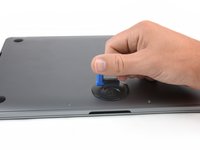
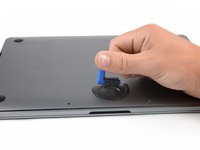



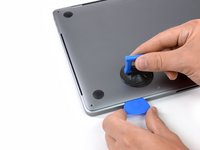
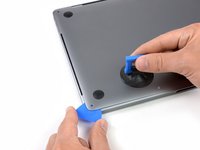
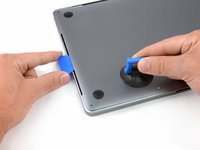



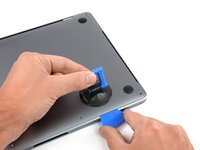
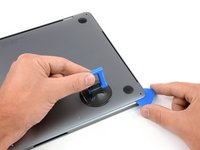
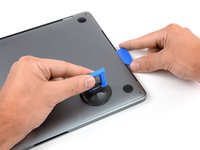



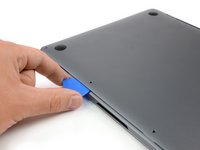
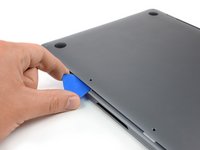
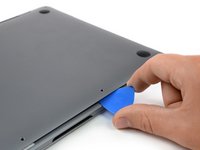



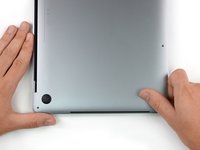
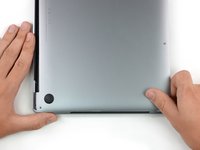
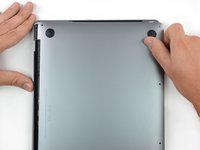



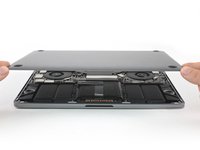
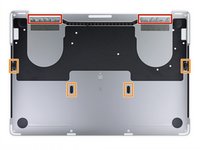
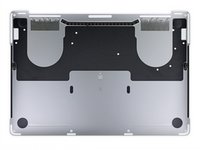



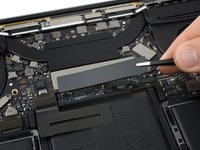


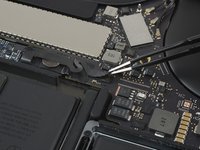
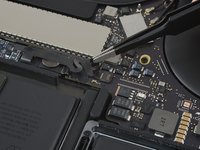


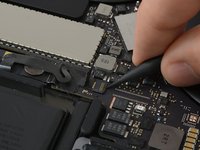
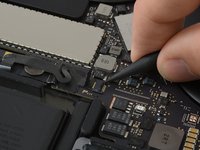


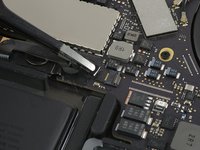
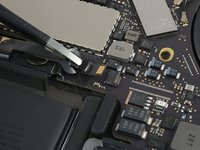


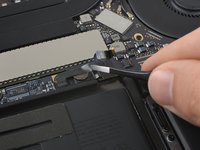
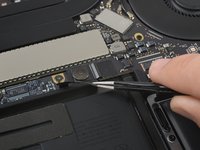


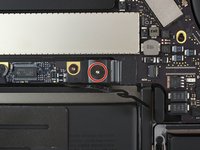
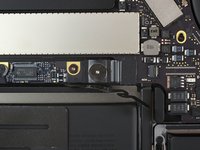


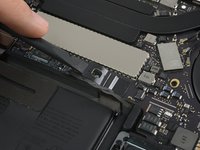
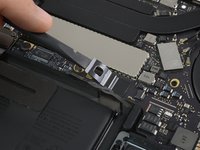








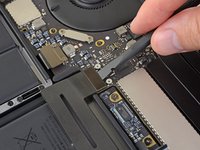
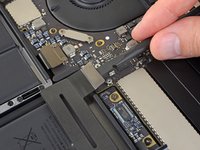




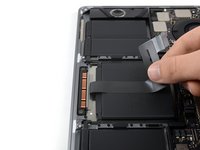
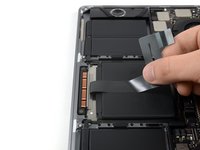
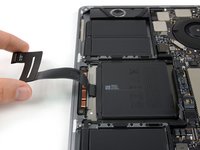


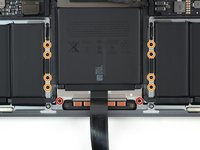
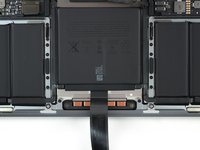


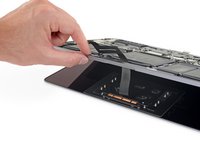
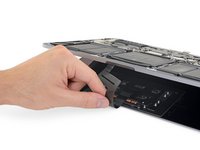



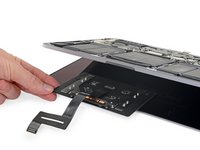
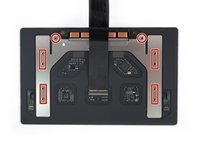
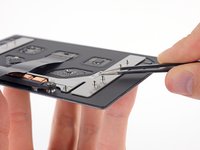







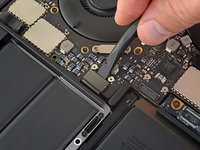
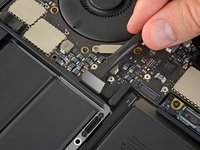


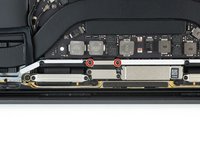
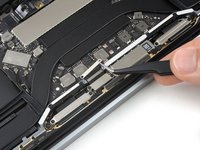


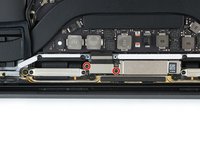
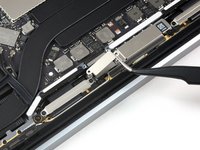


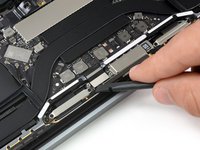
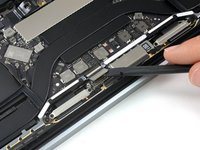


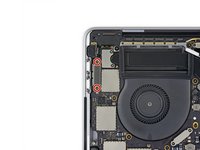
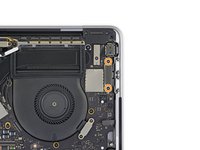

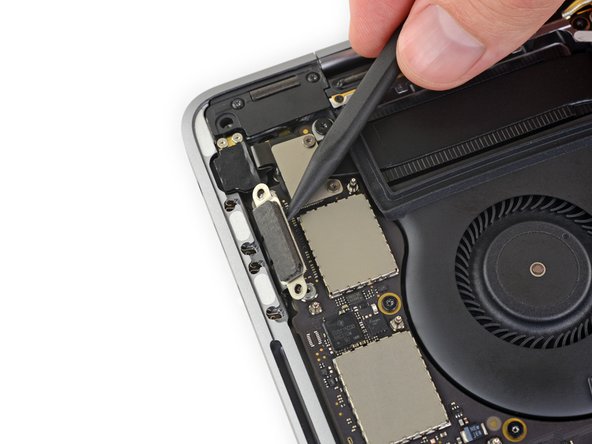
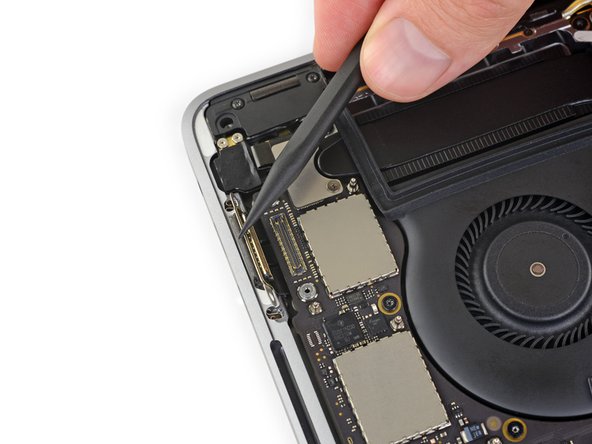
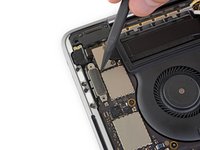
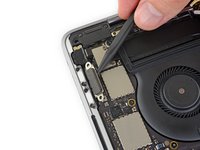
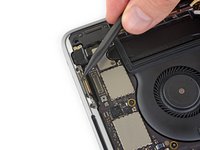



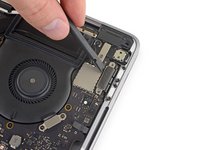
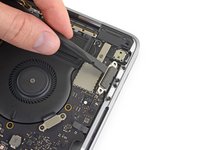
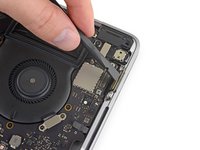


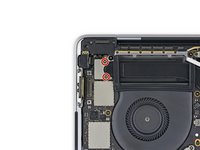
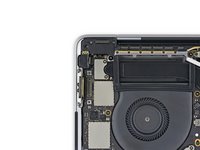


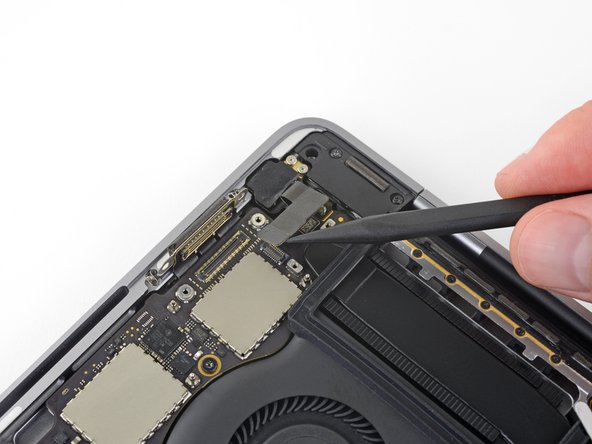
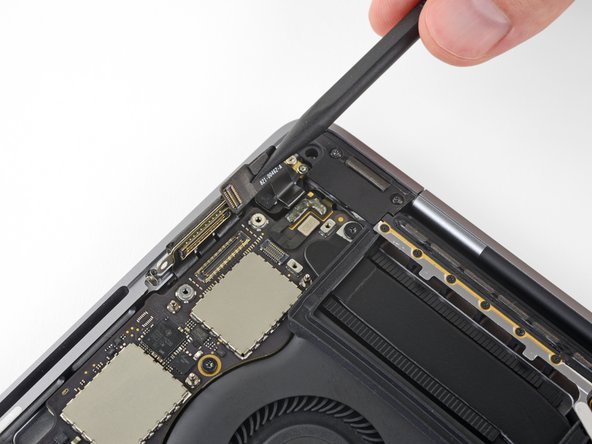
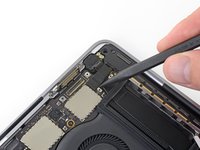
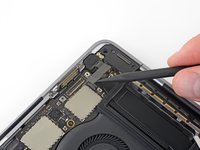
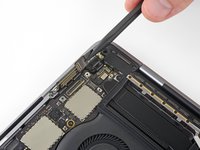


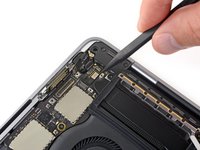



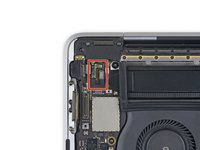
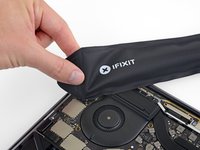



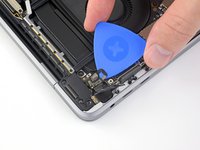
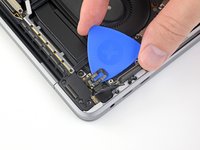
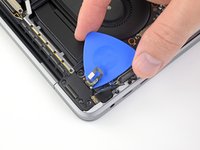


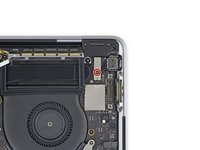
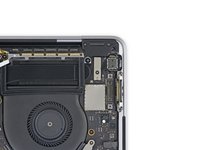



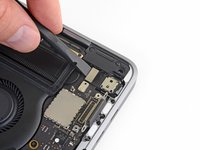
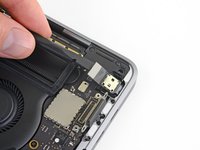


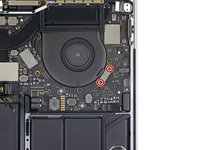
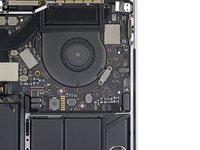



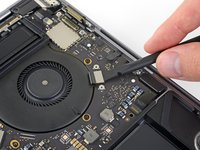
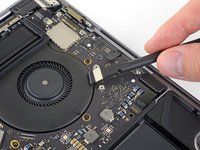


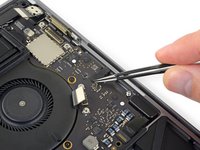
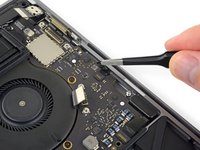


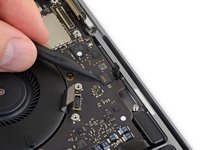
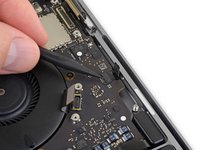


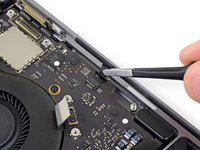
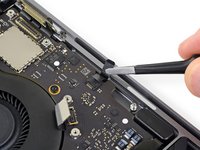



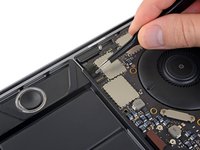


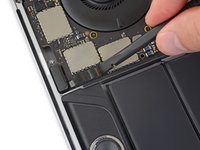
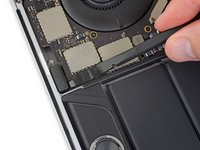


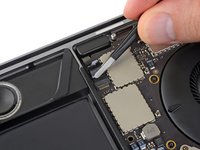



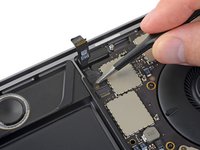
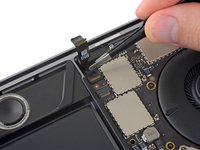


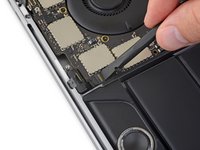
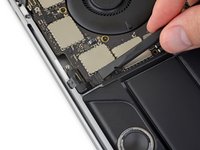


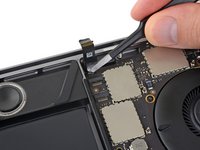
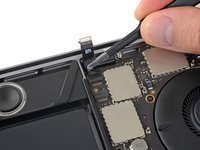


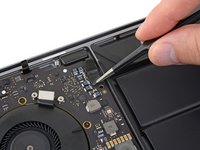
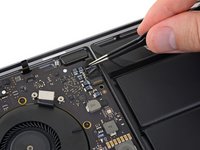


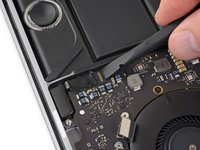
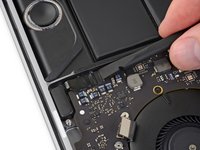


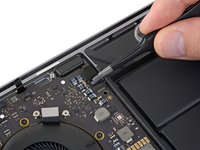




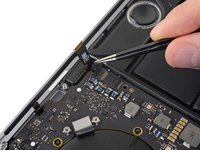


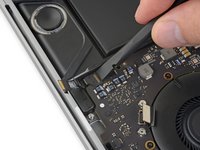
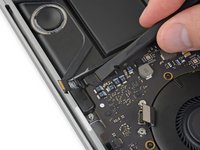




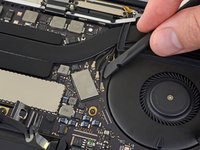
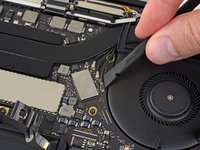
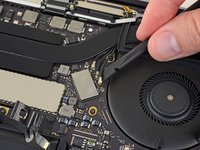



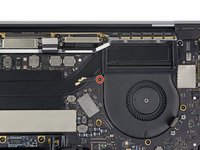
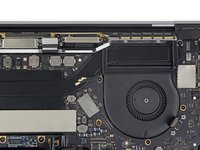


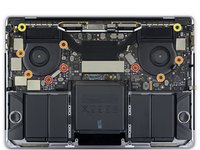
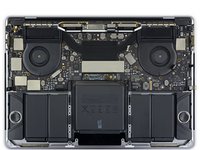



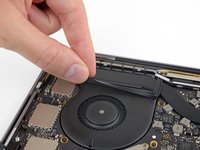
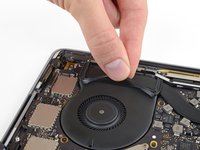
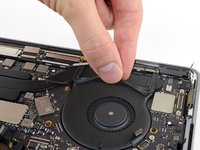


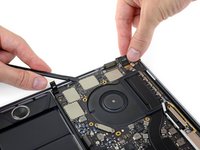
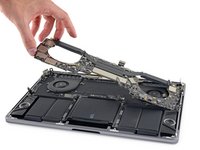



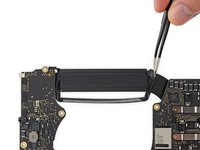
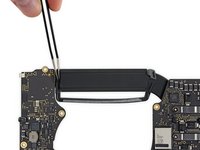
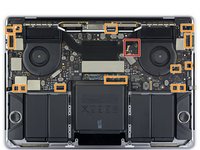

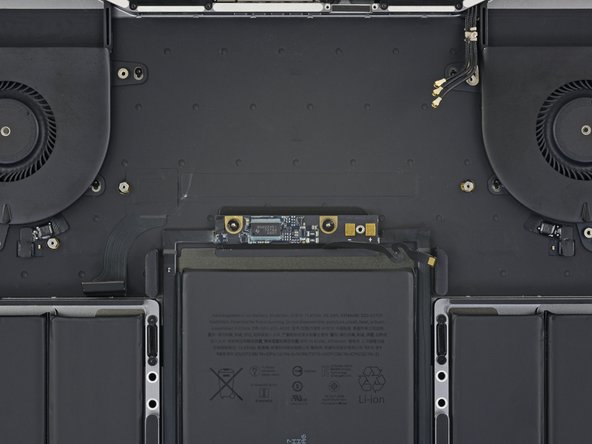
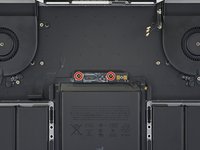
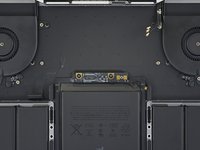



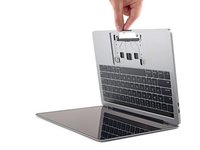

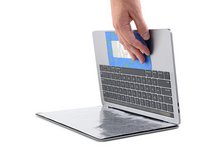


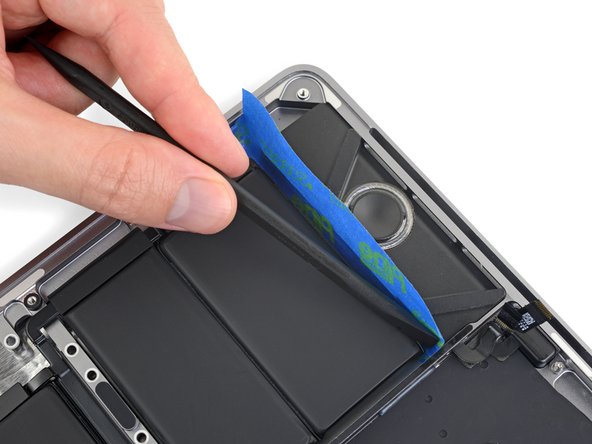
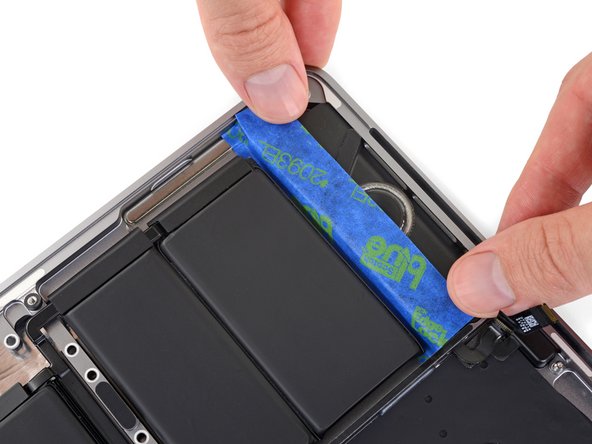
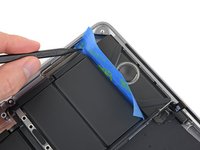
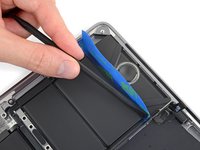
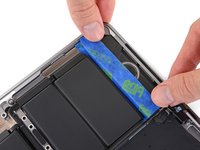


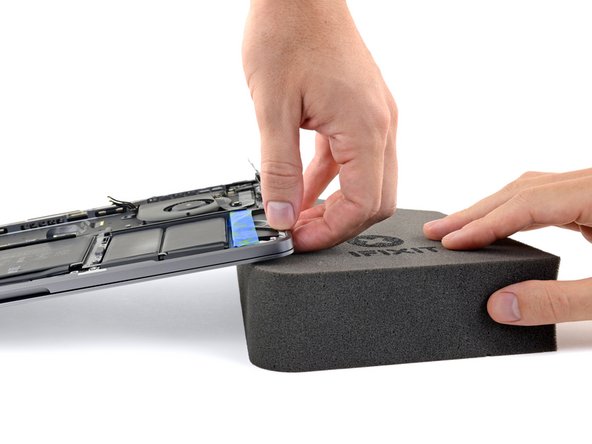
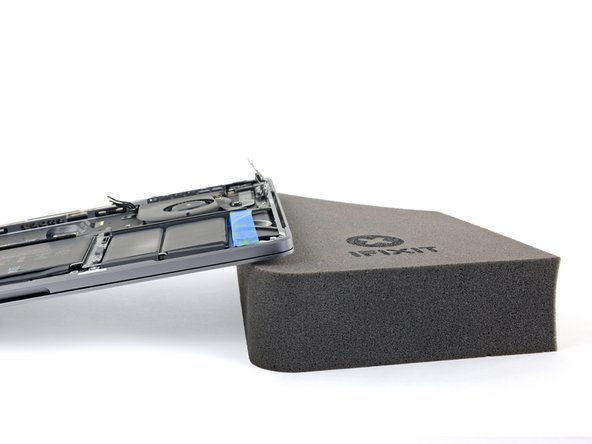
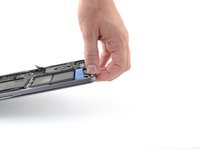
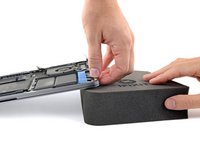
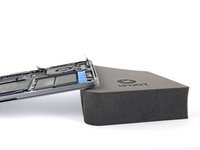


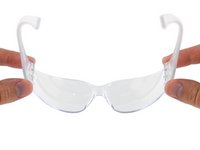


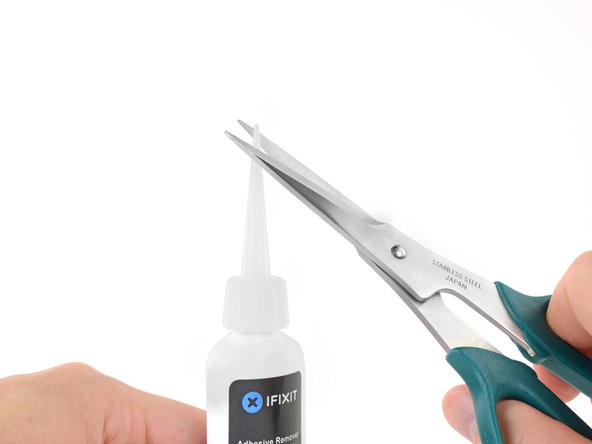
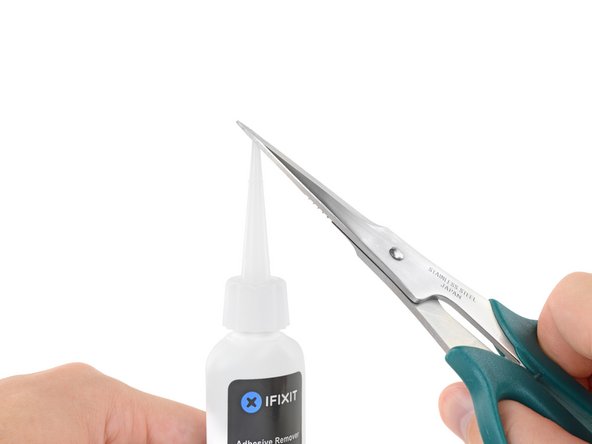
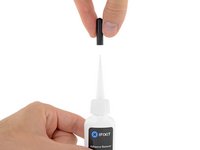
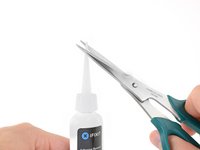
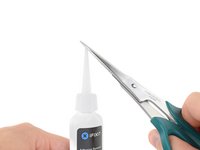

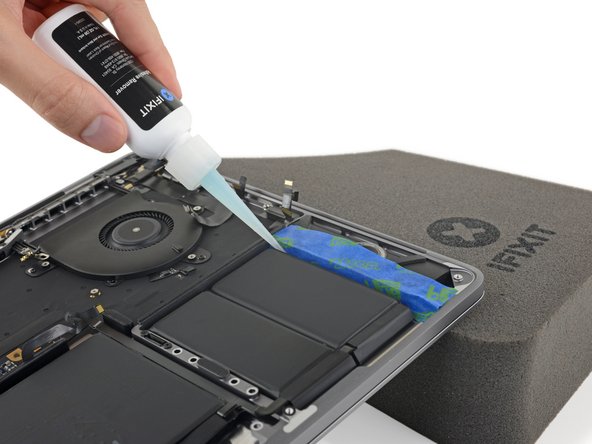
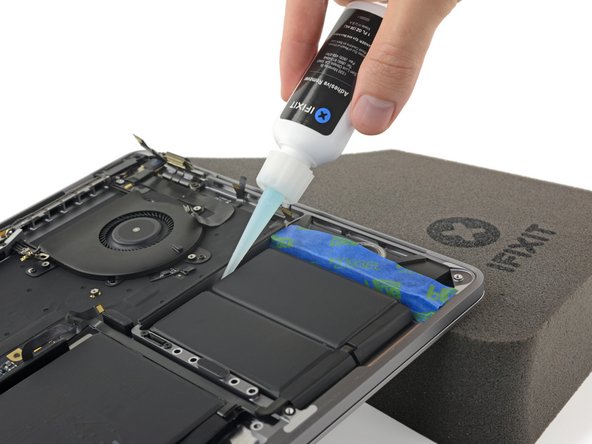
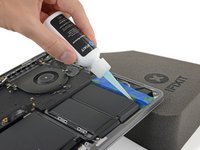
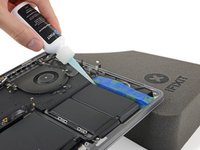
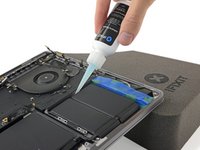

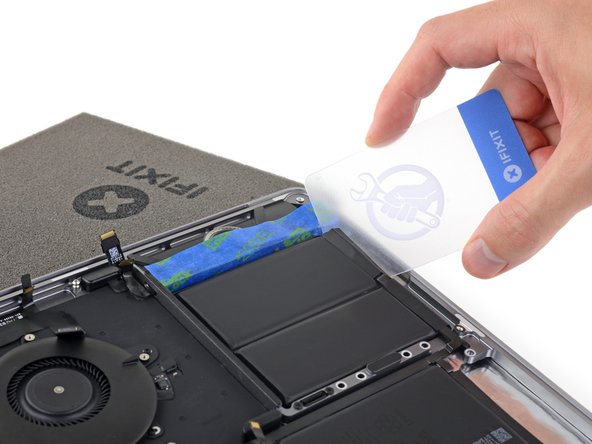



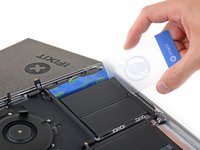
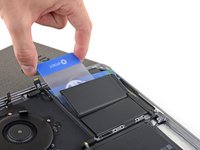


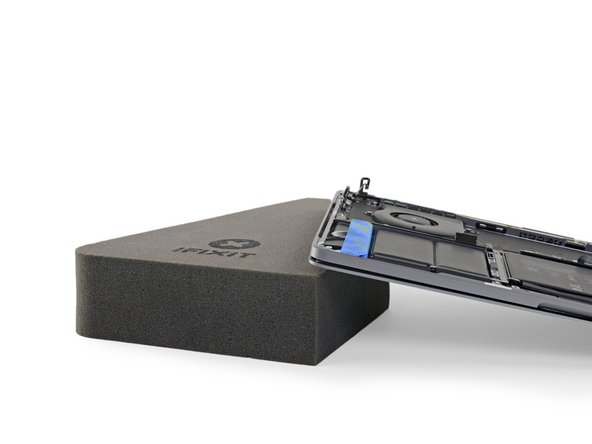
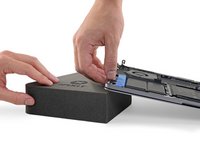
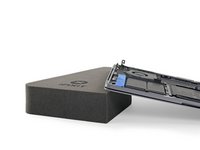

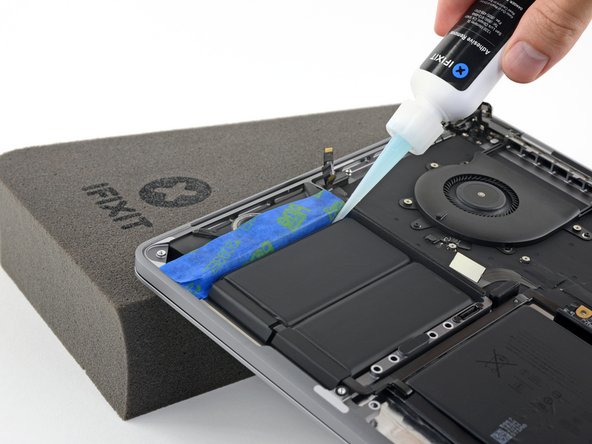
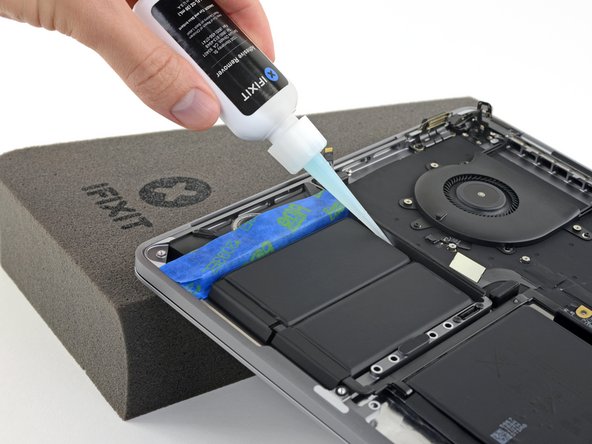
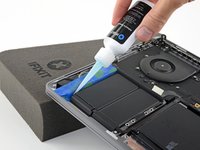
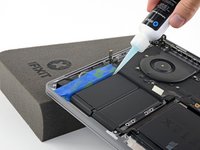
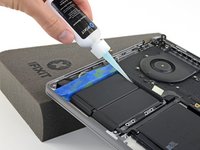

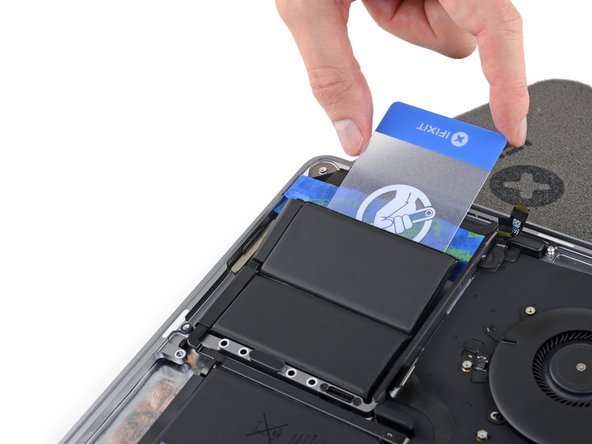
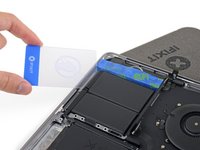


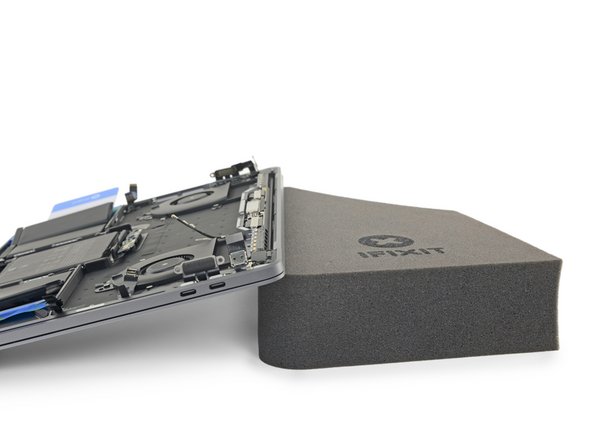
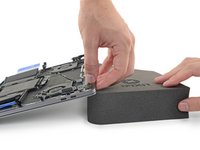
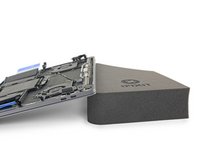

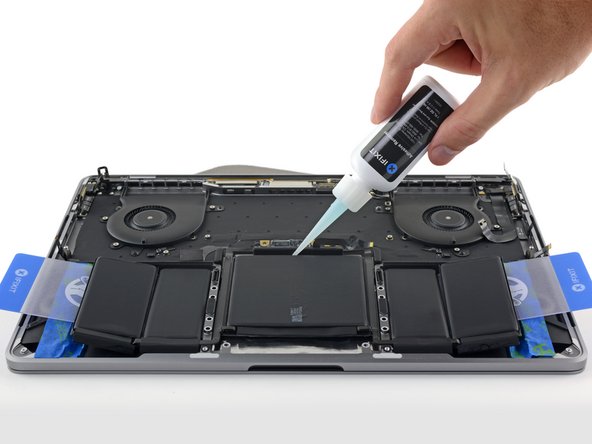
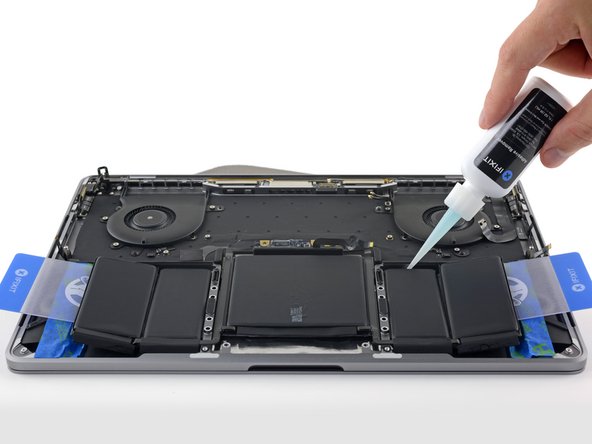
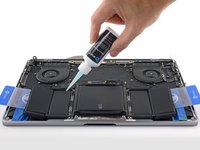
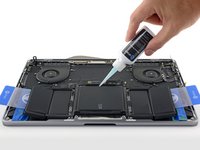
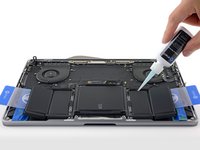




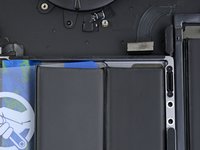
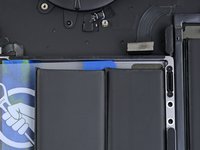


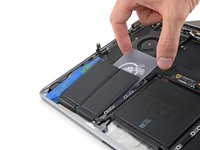
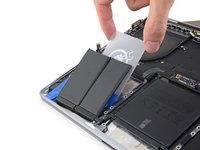

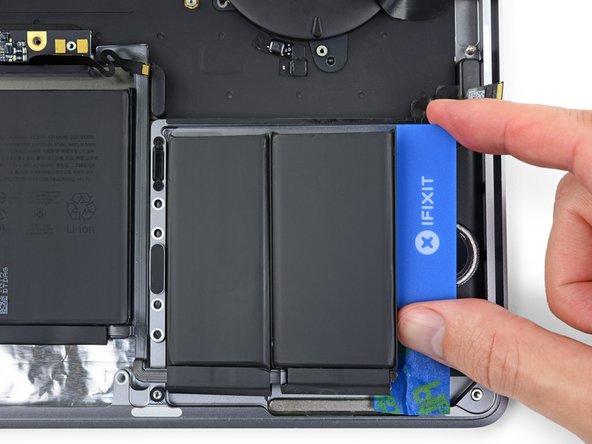
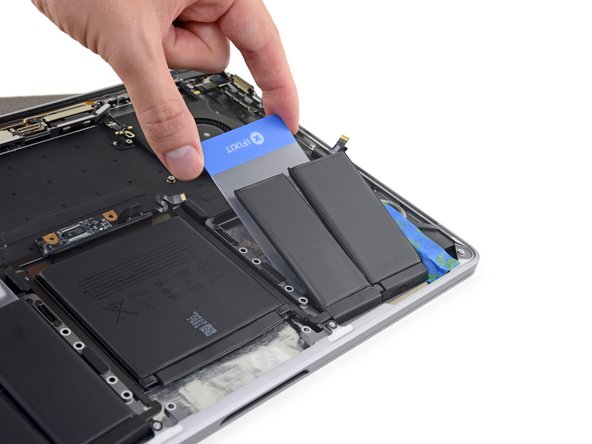
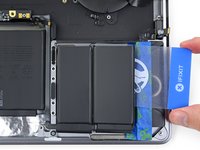
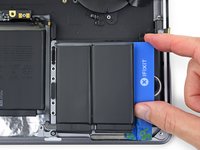
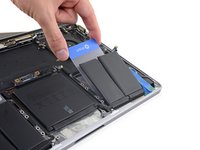



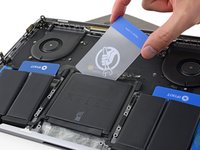

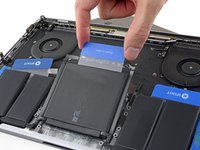



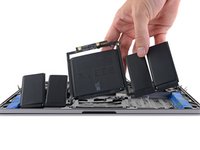
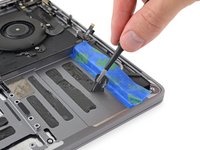
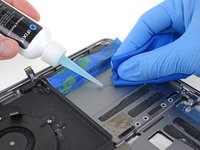

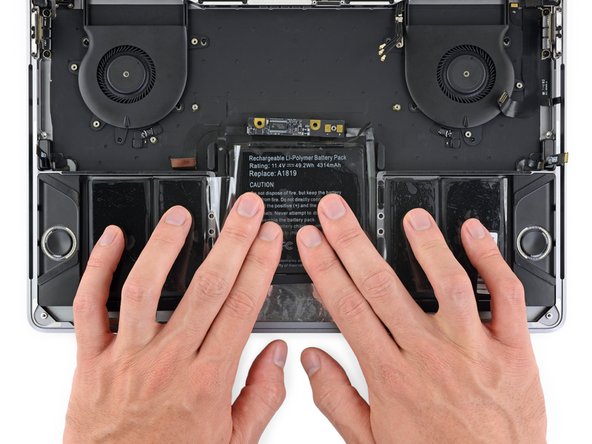
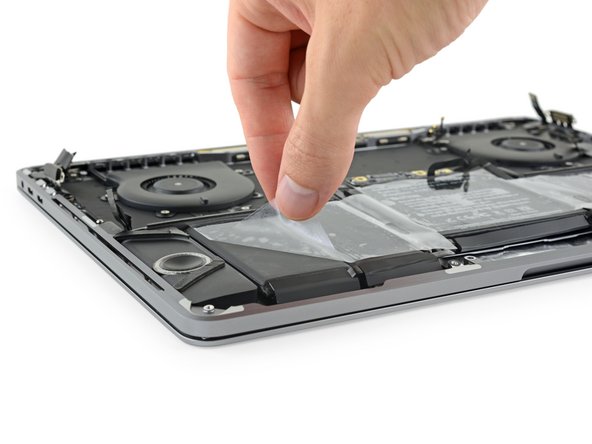


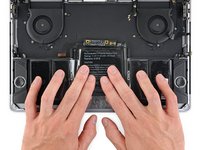
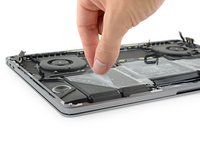


Is this step necessary? I can’t perform this step as I am attempting to repair water damage and need to remove logic board & most likely replace the battery.
Macrepair SF - crwdns2934203:0crwdne2934203:0
@mac_medic You definitely don’t want the power coming on while the board is wet. In your case, I think powering on the machine to disable Auto Boot would do more damage than it prevents. I agree, skip this step and be prepared to disconnect the battery quickly if the laptop automatically powers on. Good luck!
Jeff Suovanen -
Thats right! You don't want power running while working on your logic board.
Dan -
This did not work when running High Sierra.
Kyle B - crwdns2934203:0crwdne2934203:0
Tried this on a 2018 MBP 13” Touchbar (there’s no iFixit guide for this model yet). Need to replace a broken screen.
Luckily I managed to connect to an external screen (Cmd-Down Brightness to switch displays) and enter above command. Seems to work, but there’s another problem with this model - it powers up as soon as any key is pressed……. ffs <gnashes teeth>
Cool_Breeze - crwdns2934203:0crwdne2934203:0
I unscrew the battery first and wrap electrical tape over the logic board battery connector before attempting any repairs to the board. Haven’t had any problems yet and I’ve worked on about 10 of these models already. Also when you open the bottom case use a suction cup at the bottom and pull up then run a plastic spudger along the edges to disconnect the clips. Also only use a plastic spudger on the board. Saw a youtube video from a repair shop and he did not disconnect the power and used all metal tools during the entire process of removing the board. His last step was to disconnect the battery terminal.
Brian - crwdns2934203:0crwdne2934203:0
Is this step necessary if my mac can turn on? Battery fully dead(
Nursat b - crwdns2934203:0crwdne2934203:0
BEFORE YOU START: The included torx head stripped off before I was done (and you might need an additional T4) so stop now and go buy a good one. Also they fail to warn you above to get some blue threadlocker ahead of time.
Jason Sherron - crwdns2934203:0crwdne2934203:0
This command did not work for me and I read that sometime in later 2020 Apple stopped this command from working…any ideas on a work around?
Patrick Machacek - crwdns2934203:0crwdne2934203:0
Not able to do that with damaged screen
richardjgreen - crwdns2934203:0crwdne2934203:0
If you have a damaged screen you can still use a converter from thunderbolt (USB 3) to HDMI and plug your Macbook Pro to your TV as monitor display. Just make sure to chose the right Source (HDMI IN) in your TV. I did it and to make it work I unplug and plug again in my Macbook and so I could disable the Auto boot
Roberto Sanchez Bustos -
Hi. This does not work on 2018 13” MacBook Pro with Touch Bar. I did exactly this to disable auto boot. But when I check by using nvram -p it says: auto-boot true. Am I doing something incorrectly? I did everything step by step. Copied and pasted the sudo command, pressed enter and then entered my password. I have Big Sur 11.1 installed. Is there any other way since I need to replace the screen. Thank you. Adrian
Adrian Vizik - crwdns2934203:0crwdne2934203:0
Hi everyone. This is also a little pointless if you can’t see anything on the screen, and you don’t have a display adapter to USB C to display it. I agree with Brian about removing the back and disconnecting the battery cable before you even think about opening the lid of the MacBook. Applying the insulation tape is also a handy little tip that just makes sure there is no way to discharge from either the board or battery.
Roberto Enrieu - crwdns2934203:0crwdne2934203:0
running `nvram -p | grep 'AutoBoot'` in terminal verifies that it was accepted
result: `AutoBoot %00`
Marek Polák - crwdns2934203:0crwdne2934203:0
Running Big Sur 11.6.7 on a 2019 16" MBP, it's "auto-boot". So it's:
nvram -p | grep 'auto-boot'to display the current state, the default istrue- and then to change it,sudo nvram auto-boot=falsewhich turns it off.Ed Mechem -
This step is completely unnecessary if you follow the guide to disconnect the battery properly. Just put some tape between the battery and logic board connection to prevent it from accidentally touching and therefore powering on the laptop.
Grant Ormsby - crwdns2934203:0crwdne2934203:0
It took me a few tries to make this command work, as I was able to copy and paste the command into Terminal, but could not type in my laptop’s password. I finally typed my password into a text document, copied it (command C), and then pasted it into Terminal and it worked.
tommy404 - crwdns2934203:0crwdne2934203:0
I didn’t do this. Mine never auto-booted before I replaced the battery. Now it does.
hatuxka - crwdns2934203:0crwdne2934203:0
BEFORE YOU DO ANYTHING - CHECK THE BATTERY!
I-fixit sent me a bad battery, which I didn’t realize until it was already install. They sent me a new one, but I wasted hours uninstalling and reinstalled.
Get a volt meter and measure the voltage on the output of the battery pack. If it reads 0 V, SEND IT BACK. It should read over 2 V.
bcardanha - crwdns2934203:0crwdne2934203:0
I've just received my replacement battery and it reads 0,042V between the two main connectors. Do you think it's dead?
peter sussex -
When I did this from Terminal.app within Recovery Mode, the “sudo” was not recognized but I could invoke it without the sudo part. It seems to have been accepted when looking at “nvram -p”
johann beda - crwdns2934203:0crwdne2934203:0
When in Recovery Mode, you already have superuser powers. So you don't need to prefix commands with the sudo command to invoke them with root privileges; you already have them. Do a
pwd(print working directory) after opening Terminal in Recovery Mode, and you'll see that you're in the root user's directory.Ed Mechem -
I received the battery kit for my 2018 MacBook Pro and as per the above comment from bcardanha - Oct 12, 2021, I checked the voltage on the pads marked + and - . It was zero volts so I panicked a bit.
I sent a message on the iFixiT Facebook page and I got no reply. I finally found the customer service email for Ifixit Europe and sent them an email voicing my concern as I was not keen to work for couple of hours just to discover that the battery is faulty. I had an almost instant reply on the email (kudos to them) and they adviced me to go ahead and install the new battery as the voltage measured when battery is not connected is not relevant.
I took a leap of faith and after two hours… the new battery showed 50% charge and everything seems to be working just fine. I am happy it worked.
Mircea Comanici - crwdns2934203:0crwdne2934203:0
After removing the old battery and installing the new battery I powered up the MBP before screwing the bottom on. I discovered the my keyboard would not function. It took a few hours of investigation and frustration that I discovered the track pad power ribbon had become partially dislodged from the trackpad. I was able to see that this through the little machined slot where the battery sat. I had to remove the trackpad to reinsert the power ribbon back into the connector in the trackpad. after reassembling and reinstalling the battery etc the keyboard worked. Just food for thought if your run into the keyboard issue.
Ed Mease - crwdns2934203:0crwdne2934203:0
This should be the default. IMO I tell you to power on - not the lid.
G Sena - crwdns2934203:0crwdne2934203:0
Est ce que cela fonctionne sur un macbook pro 2017 sans touchbar ?
maël muzelet - crwdns2934203:0crwdne2934203:0
Bonjour Maël, oui, ce tutoriel concerne "les MacBook Pro 2016 (et plus récents) et les MacBook Retina 12" 2017 (et plus récents)"
Claire Miesch -
Excellent instructions. I was able to follow and install the new screen. I recommend that you get a good set of tools before you begin. I started with an inexpensive repair kit bought online. The Penta and torx bits failed. I bought an IFIXIT kit with quality bits and I was able to do everything I needed.
Tom Markham - crwdns2934203:0crwdne2934203:0
If you're not running an admin account the sudo command won't work (which honestly, you should not be running admin). Rather than logging in to your admin amount via the OS, in the terminal type "login [admin username]," then the password and you'll be able to do the sudo command as described above. Once you're complete, type "logout [admin username]" and you'll be good to go. Obviously replace [admin username] with whatever the account name for your admin user is.
arichard2401 - crwdns2934203:0crwdne2934203:0
For those unable to complete this step because the screen is too damaged I recommend leaving your macbook on until the battery dies.
Nicholas R Licato - crwdns2934203:0crwdne2934203:0
Just replaced my 2018 15" MBP battery. Running Sonoma.
I found no way to disable AutoBoot (The status can be checked in the Power section of system report).
Anyway, i left my battery completely drain before opening the MBP, and had no issues during the process.
Cédric Bontems - crwdns2934203:0crwdne2934203:0
After sending this command in terminal when I checked what happens if I now open the lid, instead the screen lit slightly up (still black) then a battery symbol showing the charging state showed up.
Now, after replacement of the battery, this is all I get to see.
No reset of NVRAM nor PRAM helped.
Currently the new battery charges (58% atm) and it feels like it‘s mocking me.
webrockers - crwdns2934203:0crwdne2934203:0
I suspected the keyboard or TouchID sensor wouldn’t work, so I went on and checked every connector.
I missed connecting the left TouchID sensor from step 31.
webrockers -
Read the comments section at the bottom of the article before proceeding with the repair. It is unnecessary to remove the logic board. I actually removed the 45mm plastic bar to enable the cables to slip out then in. It is only there to frustrate repairers!
Jack - crwdns2934203:0crwdne2934203:0